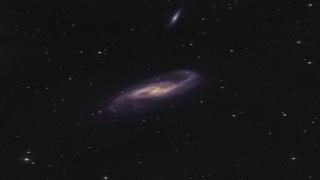Bibcode
Cisternas, M.; Sheth, Kartik; Salvato, Mara; Knapen, J. H.; Civano, Francesca; Santini, Paola
Referencia bibliográfica
The Astrophysical Journal, Volume 802, Issue 2, article id. 137, 10 pp. (2015).
Fecha de publicación:
4
2015
Revista
Número de citas
43
Número de citas referidas
41
Descripción
We present empirical constraints on the influence of stellar bars on the
fueling of active galactic nuclei (AGNs) out to z = 0.84 using a sample
of X-ray-selected AGNs hosted in luminous non-interacting face-on and
moderately inclined disk galaxies from the Chandra COSMOS survey. Using
high-resolution Hubble Space Telescope imaging to identify bars, we find
that the fraction of barred active galaxies displays a similar behavior
as that of inactive spirals, declining with redshift from 71% at z∼
0.3, to 35% at z∼ 0.8. With active galaxies being typically massive,
we compare them against a mass-matched sample of inactive spirals and
show that, while at face value the AGN bar fraction is slightly higher
at all redshifts, we cannot rule out that the bar fractions of active
and inactive galaxies are the same. The presence of a bar has no
influence on the AGN strength, with barred and unbarred active galaxies
showing equivalent X-ray luminosity distributions. From our results, we
conclude that the occurrence and the efficiency of the fueling process
is independent of the large scale structure of a galaxy. The role of
bars, if any, may be restricted to providing the suitable conditions for
black hole fueling to occur, i.e., bring a fresh supply of gas to the
central 100 pc. At the high-redshift end, we find that roughly 60% of
active disk galaxies are unbarred. We speculate this to be related with
the known dynamical state of disks at higher redshifts—more
gas-rich and prone to instabilities than local spirals—which could
also lead to gas inflows without the need of bars.
Proyectos relacionados

Las Galaxias Espirales: Evolución y Consecuencias
Nuestro grupo pequeño esta bien conocido y respetado internacionalmente por nuestro trabajo inovativo e importante en varios aspectos de la estructura y la evolución de las galaxias espirales cercanas. Usamos principalmente observaciones en varias longitudes de onda, explotando las sinergías que nos permiten responder a las cuestiones más
Johan Hendrik
Knapen Koelstra